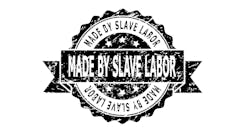Even before the wrenching events of the past year following the murder of George Floyd, a movement already was advancing to ensure more diversity in the ranks of top management and the rest of the workforce.
States like California began requiring that women and minorities be added to boards of directors and major investors like Blackrock sought to persuade company management and other investors to join the movement.
One of the first actions taken by the new Biden Administration was to order officials in every corner of the federal government to advance this cause. The administration also is dedicated to find ways of making sure that corporate America embraces the principles and practices of environmental, social and corporate governance (ESG), which includes pledging to promote sustainability and limit global warming.
One example of the Administration’s focus on these issues is the recent report that the Labor Department’s Office of Federal Contract Compliance Programs (OFCCP) will soon issue detailed and extensive instructions for federal contractors regarding how to organize and administer their required affirmative action plans.
So, at this point, how are we doing in the field of supply chain management?
Research conducted recently by analyst firm Gartner and the Association for Supply Chain Management (ASCM) found that 59% of surveyed supply chain organizations reported having some form of objective to improve any dimension of diversity, equity and inclusion (DEI ), covering race/ethnicity, gender, LGBTQ+, physical and cognitive ability, veteran status, or age. However, only 23% have adopted formal targets or goals.
Consumer and retail organizations are more likely than other industry sectors to either have a general objective for DEI or formal targets or goals, the survey found. Company size plays a role when it comes to the dedication of senior leadership to improve DEI, Gartner found. The largest supply chain organizations are far more likely to have DEI objectives—particularly formal targets or goals—than their smaller peers.
This can be seen by the finding that only 24% of small business supply chains have established improved DEI as a formal objective, according to the researchers. “This makes sense when you look at the social justice movements of 2020. The largest global companies have globally recognizable brands, so they were under a lot of pressure to take action,” says Dana Stiffler, vice president analyst with the Gartner Supply Chain Practice.
“In a global organization, it’s more likely they’ll have a DEI officer or a human resources leader who owns and cascades the DEI strategy,” she explains. “Where this is not happening fast enough, some chief supply chain officers (CSCOs) have designed and launched their own initiatives.”
ASCM CEO Abe Eshkenazi observes, “Building a diverse workforce is essential, not aspirational. Diversity of thought, influence and input—particularly from women and people of color—is crucial to today’s global supply chains.”
COVID’s Impact on Workplace Culture
While people of color (POCs) make up 30% of the overall supply chain workforce, their representation declines dramatically on the upper parts of the corporate ladder. Only 9% of vice presidents in supply chain organizations in the United States, Canada and Europe are defined as people of color.
“POC representation already starts to drop at the very first level of leadership,” Stiffler points out. “Compared to the overall representation in the workforce, there’s nearly a 50% drop at the manager and supervisor positions. This trend then continues in the upper parts of the career ladder.”
Unfortunately, this is the logical end result of a history that reaches up to recent times, Eshkenazi notes. “This is a systemic issue that goes back to the 1970s, ’80s and ’90s that unfortunately isn’t unique to supply chain. As supply chain emerged as a function, many of its management and employees migrated from other functions such as finance and engineering, which due to their own narrow talent pipelines were primarily staffed with white males.”
As is the case in many other fields, more progress is needed, he argues. “Supply chain organizations can lead the way by creating an environment where diverse talent is valued, included and developed.”
The biggest differences in POC representation are not between industries, but again between organization sizes, the researchers found. Large supply chains with an annual revenue of $5 billion or more show greater representation of people of color than any of their smaller peers at all levels of the organization.
“In the largest global supply chain organizations, 13% of vice president positions are occupied by people of color, compared to 6% in small businesses,” Stiffler says. “While large, global organizations clearly benefit from better access to diverse talent, they’re also putting in the work to practice inclusion in leadership development and succession planning.”
However, the COVID-19 pandemic has prompted a change in workplace culture which might provide smaller businesses with the opportunity to catch up, she contends. “Due to the rise of remote and hybrid work, even smaller supply chain organizations will have the opportunity to hire diverse talent, simply because the available talent pool is bigger and more diverse.”
Once supply chain organizations have established these kinds of goals and objectives, they should be translated into specific projects and initiatives, the researchers stress. This is because DEI is particularly vulnerable to statements and goals that are not always backed up by actions.
In the Gartner-ASCM survey, 36% of respondents said that their supply chain organizations are leading initiatives, while 20% said their company has enterprise-wide initiatives. This leaves 44% who don’t have any kind of initiative or are still considering starting one.
“The most successful initiatives are those that are integrated in the recruiting and pipeline planning process. In recruiting, that means diverse interview panels, diversity referral programs, summer internship programs for diverse students, blind resumé reviews and diverse campus recruiting,” Stiffler says. “In integrated pipeline planning, it means re-designing recruiting, development, performance management, and succession planning to reduce bias.”
Eshkenazi adds, “Prior to the pandemic, demand for supply chain professionals exceeded supply by a ratio of six to one. This need will only continue to grow, which is why it’s critical that teens have access to education and mentorship about career opportunities in supply chain regardless of their gender or color.”




